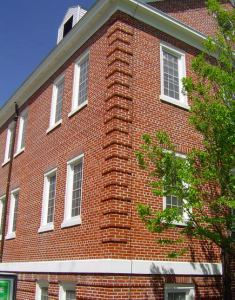On historical properties, window replacement presents an opportunity to reduce energy and maintenance costs while improving building appearance and enhancing occupant comfort and safety.
Today’s aluminum window systems can replicate a building’s historic and existing aesthetics while delivering the desired, modern performance and durability that may be required in a university, health-care facility or courthouse.

Photo: Wausau Window and Wall Systems
Making the Case
In many aging buildings, the existing windows are leaky, single-glazed sash with conductive framing systems. They can be difficult or even dangerous to operate; promote unhealthy condensation, mold or mildew formation; and require occupants to keep their distance from exterior walls because of glare, drafts and noise.
The first step in window replacement is to enlist a design professional to set aesthetic and performance goals. Thermal transmittance, condensation resistance, acoustics, ventilation, view and solar heat gain all should be considered. Many facilities professionals find it advisable to include the building’s mechanical engineer, as well as technical staff from a qualified window manufacturer, in establishing performance criteria.
Local energy codes often address historical building renovation. The provisions of the Chicago Energy Conservation Code, for example, are not mandatory “ … for structures that have received landmark designation under the Chicago Landmark Ordinance or have been listed on the National Register of Historic Places.” Otherwise, if more than 25 percent of windows are being replaced, envelope performance requirements apply.
Obviously, local regulations and building codes impact the performance criteria that are established, but in some cities, the exterior appearance of proposed replacement windows also can require approval of redevelopment authorities, especially in designated historic districts. Although sometimes viewed as a roadblock, such approvals can aid in maintaining period ambiance, which can help preserve property and community values. In some cases, changes of mere millimeters of window frame sight-line dimension have been deemed unacceptable, and custom solutions are necessary.

